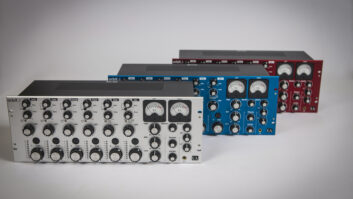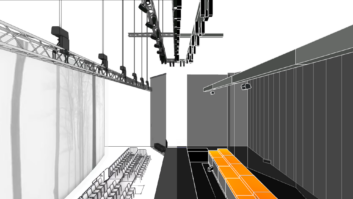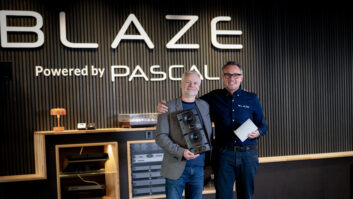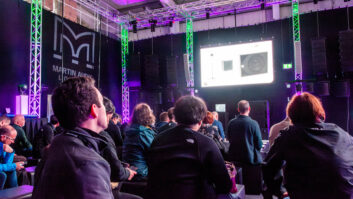Businesses and market sectors change over time, either responding to or being affected by national and world economic conditions, new requirements and requests from end users and emerging technologies. Professional audio has had to react to all of these since its earliest days, but it would not be an exaggeration to say that the last 20 years have seen been amongst the most demanding and transformative the sector has faced in its history – with the period from 2020 the most tumultuous.
The Covid pandemic turned life in general upside down, having a dramatic, negative impact on entertainment production and commercial AV installations. This was exacerbated by a component shortage, although this was already starting to make itself felt by the end of 2019, while UK manufacturers, systems integrators and hire companies faced the additional disruption caused by the country’s withdrawal from the European Union.
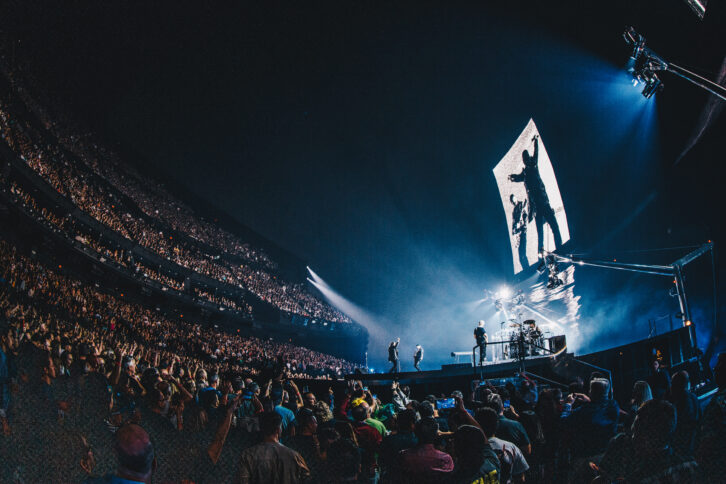
Pre-2020, the sector had not only been growing in size and financial worth but was seeing greater diversification, with areas such as commercial and PA installation – along with so-called ‘resimercial’ seeing the use of pro audio equipment that would have once been the preserve of broadcasting, live concert touring and music recording, in the home. (For more on this, see page 16, or click here.)
HIGH VALUE
In 2022 the value of the international pro audio equipment market was reported by Business Research Insights to be $4.316 billion. In the same report, updated on 19 March this year, it was estimated that the pro audio sector would hit $5.691 billion by 2028, showing a compound annual growth rate (CAGR) of 4.7 percent. According to more focused reports published in 2023 by Futuresource, the professional microphone and professional loudspeaker segments in particular are doing well, with some specific areas within them driving growth.
The installed commercial vertical is identified as the “most stable and steady” for mics. Despite a drop of 12 percent in 2020, this was balanced out by an increase of 17 percent the following year, with a forecast CAGR of 7.1 percent. A major factor in this was the demand for good quality mics in video conferencing, both in office meeting rooms and for employees working remotely either at home or in other locations. As the world starting to come out of lockdown in 2022, demand for loudspeakers rose considerably – together with mixing consoles, amplifiers and mics – as live events started up again. The continuing boom in virtual and augmented reality (VR/AR) has additionally called for good quality audio gear to help create a realistically immersive environment.
Grant Youngman, senior market analyst at Futuresource, explains that pro audio companies are now looking beyond their core equipment or technology areas so they can be involved in broader audio systems. “We are seeing growth across the board in many product categories, with brands now very much interested in the entire ecosystem in addition to their own product areas,” he says. “Many companies are restructuring by vertical – touring, installed leisure/commercial and so on – which shows an increased focus on the audio process as a whole.”
SHARP GROWTH
James King, director of marketing at Martin Audio, confirms the market came back with something of a vengeance immediately after the Covid crisis, but that more recently it has fallen back to more realistic levels.
“Last year saw sharp growth, as much as 20-30 percent, due to the industry bouncing back from the pandemic,” he says. “But also because prices increased almost universally across manufacturers, creating a new playing field. This year industry growth is much more measured, with less than 10 percent predicted as the supply chain stabilises, lead times reduce and competition increases. Prices have also remained more consistent. The market has, in effect, returned to pre-pandemic norms where well run brands can continue to outpace market growth.”
On the product front, Martin has filled what King describes as “previous holes” in its portfolio by adding the TORUS constant curvature array and a wide selection of point source systems as part of the FlexPoint range.

He acknowledges that the company was affected by supply chain problems, with lead time lengthening from six to 24 months “overnight”, but not as seriously as some others. “That was due to us being able to continue investing in the supply chain during the pandemic,” he explains. “We were also fortunate that our parent company, Focusrite, benefited from people buying audio equipment for the home during lockdown, which allowed us to retain all our staff and continue to invest in stock and R&D.”
THORNY ISSUE
In the UK, when it comes to the thorny issue of Brexit, which even some of the most ardent supporters of it now refuse to mention by name, King says there were problems but that its impact goes beyond the import and export of products. “It was challenging but we have been able to manage the logistical issues over time,” he explains. “What has happened since is that the knock-on impact on the touring industry has increasingly hit UK-based rental companies, which were used to having regular work and tours in Europe. That work has now become increasingly scarce, so it has meant we have had to strengthen our rental partners in Europe.”
The increasing use of immersive technologies in consumer as well as professional or commercial environments is picked up on by Paul McMullan, head of sales for northern Europe at L-Acoustics.
“I believe we are on the precipice of a fundamental change in the expectation of end users,” he comments. “Much as the adoption of higher quality home hi-fi in the 80s and 90s drove similar development of more powerful, controllable and refined live audio systems; the proliferation we’re seeing today of immersive audio through platforms like Apple Spatial Audio and Dolby Atmos is driving demand for spatial content in live experiences.”
McMullan adds that L-Acoustics has seen this in real terms with its L-ISA system being used for Adele’s Las Vegas Weekends residency and the Broadway production of David Byrne’s Here Lies Love musical.
He says the pro audio market has “experienced significant growth and transformation over the last few years”, although some sectors have grown more quickly than others. “Those that support the live events industry have seen considerable expansion post-pandemic,” he says. “MIDiA Research has put the growth of live events at almost 37 percent from 2022 to 2023, which contrasts with just 12 percent for streaming. In the UK, the gross added value [GVA] of the live music industry to the economy in 2023 was roughly £610 million, which proves we continue to play an important role in both the cultural fabric and economy of the country.”
SIMILAR MARKET
A similar kind of market development is being experienced outside the UK, with Simon Godfrey, director of sales for the Europe, Middle East and Africa (EMEA) region at AtlasIED, describing pro audio as “one of the most exciting industries to be involved in right now”. This is, he says, due to companies introducing innovative technologies and expanding their product portfolios into different market sectors.
“Customers are always looking for new products,” he comments. “For example, immersive and beam steering technologies are now more established and available. Additionally, artificial intelligence [AI] and machine learning [ML] are becoming a significant factor in many AV product offerings.”
This, Godfrey continues, can be seen in new styles of concert experiences using AI-generated animation in conjunction with motion capture technology. “This allows producers to create a dynamic and exciting performance for the paying audience,” he says, “and all of these productions need pro audio to adapt and deliver a comprehensive system design. Another aspect that people are looking for and which most manufacturers aspire to but sometimes miss is value-added service. It is vitally important to have a strategy and pre- and post-sales support for your brand, ensuring you are providing your customers with a valuable experience as they work with your products.”
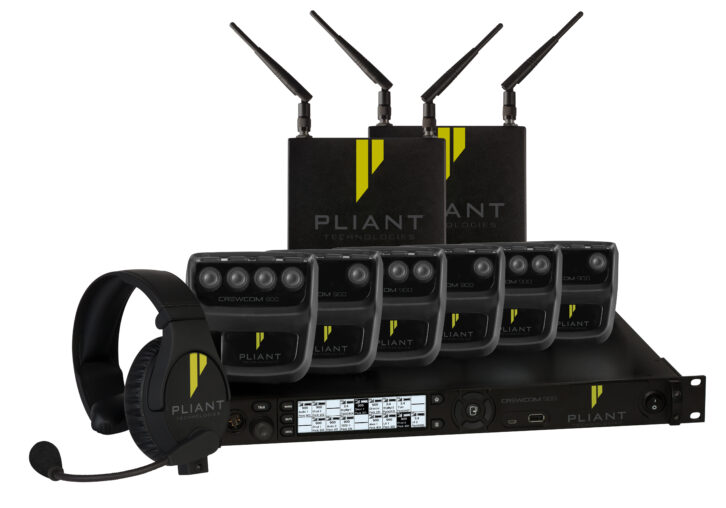
Additional value and services are not just the responsibility of manufacturers, as Karl Brunvoll, vice president of international sales for Renkus-Heinz, observes: “A lot of distributors are now focusing on providing added value and moving away from the traditional distribution role of buying products and selling them into the market. Today, there is more focus on training and educating customers and employees, delivering more expertise to the clients and going into more depth with the products. It’s not just about the equipment any more, they’ve got to provide know-how as well.”
Brunvoll also sees growth in pro audio following the pandemic, both for the market as a whole and for Renkus-Heinz’s business specifically.
“There is growth in transportation, auditoria, lecture halls and houses of worship,” he says. “But for our company, there is more growth in the theatre world with our beam steering products. This is a growing area in loudspeaker technology because it gives greater control and enables the audio to be focused on the audience. This means a venue is not as dependent on the acoustics of a room and can improve voice intelligibility, which is why this tech is now being used not only for speech but also music.”
LIVE EVENTS
Over the last 30 years a key enabler in live event production has been the RF-based device. This has been primarily in the form of wireless microphones but these are now matched in importance by in-ear monitors (IEMs). Having two sets of devices requiring radio frequencies has put even greater pressure on the spectrum available for PMSE (programme-making and special events) work, which was already straining as live concerts and broadcast productions grew ever larger in terms of mic channels.
The spectrum allocation situation remains stable but still a concern. The last World Radio Conference (WRC-23) at the end of last year confirmed that the UHF band would remain available for PMSE for the foreseeable future, although there will be a review in 2031 to reassess the allocation for wireless mics and whether mobile phones and broadband should have more access to the 600MHz frequency range. In the meantime, wireless pro audio developers have been working on new technologies to make optimum use of existing frequencies.
The most prominent of these right now is Sennheiser’s WMAS (wireless multi-channel audio system), which is intended to enable more audio channels to be multiplexed into a single wideband frequency. While WMAS is still in its early stages, it was demonstrated at WRC-23 during the US Reception where rock band Sonic Crusaders played using a prototype IEM system based on the new multiplexing technology.
Kyle Sullivan, head of marketing for Sennheiser’s pro audio division, comments that after a “massive decrease” during the pandemic, wireless technology for live audio is seeing “substantial growth” again. “There is a hunger for live events and concerts, which continue to be a beacon for pro audio,” he says. “During 2023 we saw significant demand for memorable live experiences and anticipate the trend continuing this year.”
Sullivan observes that end-users are now being more creative when using their technology, with the “maturity of standard protocols” allowing for smoother workflows. “Operators expect more from wireless microphone systems in terms of seamless workflow and set-up,” he adds. “This is one reason why WMAS has become a major topic this year, because the way RF systems are configured and managed must adapt to the ever-congested RF spectrum.”
CHIP CRISIS
Like other pro audio manufacturers, Sennheiser felt the impact of the chip crisis; Sullivan suggests the sector was hit harder because of its market size and value compared to the wider electronics and automotive industries, which had the financial clout to buy scarce chips at higher prices. “As with many other industries that produce electronic devices, audio manufacturers had to increase prices as the cost for chips exploded,” he acknowledges. “In view of the havoc the pandemic created, we tried to keep these price increases as modest as possible.”

The pandemic caused further financial problems, with Sullivan saying that live music, theatre and events – core businesses for Sennheiser – “went down to zero.” But, he says, there were some positives, with investment in hybrid audio systems for education, home studios and streaming. There was also a sudden demand for high quality microphones – together with higher resolution, automated cameras – on video conferencing calls both in employees’ homes and office meetings rooms, leading to the creation of a new discipline: hybrid working.
While pro audio companies such as Sennheiser, Shure and Audio-Technica continued to move into this new sector and offices in general with beam forming and array microphones, manufacturers that had previously been regarded as more on the commercial or consumer side raised their profiles as providers of professional sound equipment. Among these is Jabra, which produces a range of headsets and ear buds for office, home and on the move listening. While purists might see the Danish company as consumer or semi-pro, it promotes itself as a “professional audio brand for work and life”.
KNOWLEDGE WORKERS
Product manager Richard Trestain explains further by describing Jabra as providing “audio for professionals”, which includes business people or “knowledge workers” looking for higher quality sound to make communications in their work easier and more efficient.
“We’ve always produced headsets for remote and flexible working but over the last four years since the pandemic began the technology has changed and the way we’re developing different products for different use cases has also evolved,” he says. “During the pandemic we saw some key changes in the market, including people demanding even more flexibility, with more of them working in a third location such as a cafe or an airport lounge. There was also a sky-rocketing of collaboration in general, because people weren’t able to pass their colleagues at the water cooler to catch up. You had to call them and get online.”
Trestain adds that despite a return to the office by many companies, remote working remains at a “relatively high” level. “It’s a great way of doing things but it also means people are wearing their headsets for much longer and using them for more complex tasks, often in noisier and more difficult environments than before. Because of this we have put Jabra ClearVoice microphones on all our Evolve2 headsets, which pick up the user’s voice and not those around them. We used Microsoft Open Office guidelines in creating these mics, which are based on beam forming technology and our own algorithms.”
RESIMERCIAL EXPANSION
The use of residential audio products in commercial settings isn’t new, with restaurants and bars in particular leaning into brands such as Bose and Sonos, but this resimercial approach to installations is expanding as more and more brands smell the opportunities.
AudioControl, part of the AVPro Global Group, established itself in home theatre and in-car sound, and has recently been moving that experience more into the pro audio field.
“Some of the best consumer audio can be found in the home theatre category,” comments Tom Devine, marketing director of AVPro Global. “When those same engineers devote their attention to pro audio, they bring the principles that have driven them to deliver exceptional quality and performance. Pro audio installers have been welcoming towards new brands that bring a fresh perspective to pro AV systems and installations and we’re seeing multi-zone sound being used to draw us closer to the sensation of a live concert experience.”
AUDIO CROSSOVER
Much has also been made recently of the crossover between AV and broadcast. Part of this naturally includes audio, with ‘broadcast quality’ microphones and processors, amongst other equipment, being used for presentations and commercial productions. Less talked about but something that has happened over the years – and continues today – is pro audio manufacturers with a firm background in music recording either adapting products for AV or producing completely new ones for that market.
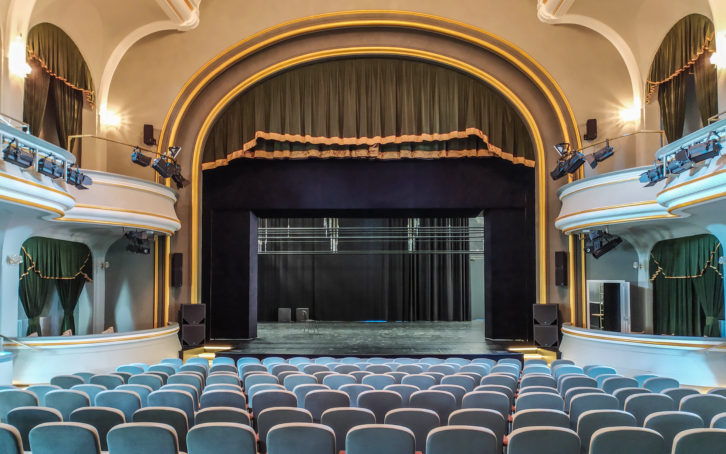
The latest to do this is Prism Sound, which develops multi-channel converters, Pro Tools and Firewire interfaces, AD-DA converters and pre amps for recording and production. Its most recent release, however, is aimed as much at the installation sector as the company’s usual customer base. The Dream ADA-128 is an audio conversion system that can host up to 20 plug-in modules, which right now include eight-channel analogue inputs and outputs, an eight-channel AES3 module and Pro Tools HDX and Dante hosts.
“Installed sound has historically been a much smaller part of our market, ” comments Prism Sound sales director Mark Evans. “And it’s the advent of our newest product, the ADA-128, that brings us closer and offers the kind of features that installers look for in a way that’s different to most of our product range. It’s not that the older products couldn’t be used for this kind of application but with the new product we definitely had the install market in our minds when it was conceived.”
To this end the Dream ADA-128 was designed to be robust with the capability to handle a large number of channels and offer multiple types of connectivity. “It’s a product that can sit at the heart of installations, feeding audio, taking various audio over IP [AoIP] sources and sending them to other places,” Evans says. “No market is without its challenges today. World economic conditions don’t make any of them easy at the moment.
However, one of the good things about the 128 and the fact it can be used in different applications is it allows us to capitalise on the ebbs and flows of the different markets. If recording is stagnating and people aren’t buying products, chances are the live or install market is increasing. All these markets are growing but just slower than in previous years.”
HEALTHY GROWTH
Views on whether having more players in the pro audio market is a good thing or a bad thing are split. Kyle Sullivan at Sennheiser observes that “although pro audio appears to be saturated with manufacturers”, it continues to show signs of “healthy growth”. On the other hand, Gary Rosen, vice president of global sales at wireless intercom manufacturer Pliant Technologies, sees it as potentially having a negative effect on business and customer satisfaction.
“Some companies see the pro side and integration as their next growth area,” he says. “Unfortunately, some of the larger companies are bringing in successful but generic management that does appreciate how important the relationships are with the customers. There are many aspects of pro audio beyond just the gear. Many end users are small companies that need to feel like they have an advocate when they buy expensive systems. As for consumer and resimercial companies moving into pro, it is segmenting the market. There is less mid-line product and we see either top-end quality or low-end, unsupported ‘Amazon’ level gear that is disposable but which people view as ‘good enough for now’.”
POSITIVE ASPECTS
There are, however, more positive aspects to the broader today’s pro audio sector. One of these is the greater availability of open and shared technologies, with more companies now working together in developing new standards. As Grant Youngman states, a good example of this is L-Acoustics and d&b audiotechnik working jointly on the Milan AoIP protocol. “Typically pro audio brands are very private and there are minimal collaborations,” he says. “But we are hoping this is the start of continued shared developments.”
With business levels returning to pre-pandemic levels, boosted by crossovers across residential and commercial, live music/immersive and residential/commercial, and the AV and broadcast industries – as well as the possibility of more collaborative R&D, things are looking, albeit cautiously, encouraging for pro audio.


